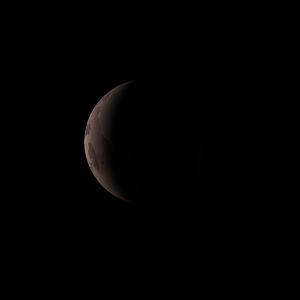|
|
Space Astro
|
Info for exoplanet "Xese Chyong"
| Scientific (actual) data |
|---|
| Name | TOI-2537 c |
| Planet status | Confirmed |
| Mass sini | 1.3 |
| Orbital period | 1920 |
| Semi major axis | 2.78 |
| Orbit eccentricity | 0.29 |
| Discovered | 2024 |
| Updated | 2024-12-26 |
| Omega | -35.6 |
| Tconj | 2460060 |
| K | 156 |
| Temperature (kelvin) | 123 |
| Publication | Published in a refereed paper |
| Detection type | Radial Velocity |
| Mass measurement type | Radial Velocity |
| Star name | TOI-2537 |
| Right ascension | 54.39° |
| Declination | 10.06° |
| Mag v | 13.24 |
| Star distance | 182.4 |
| Star metallicity | 0.08 |
| Star mass | 0.77 |
| Star radius | 0.77 |
| Star sp type | K2V |
| Star age | 1.1 |
| Star temperature | 4843 |
| Wikipedia article | TOI-2537 c |
Back
| |
| Fictional info (?) |
|---|
| Suggested name | Xese Chyong |
| Planet type | Cold planet |
| It is a cold planet planet with a mass one-thousandth that of TOI-2537, but two-and-a-half times that of all the other planets in its solar system combined. The planet telescopically displays the complete range of phases, similar to Venus and the Moon, as it moves in its inner orbit relative to TOI-2537, which reoccurs over the so-called synodic period approximately every 168 days.
It has the densest atmosphere of all the cold planets, consisting of huge amounts of sulfur dioxide.
The smooth Borealis basin in the northern hemisphere covers 26 percent of the planet and may be a giant impact feature. |
| Atmosphere | Sulfur dioxide | 82% |
| Krypton | 11% |
| Molecular hydrogen | 6.5% |
| Atmospheric pressure | 2.6 bar |
 |
| No known satellites |
| Google search for Xese chyong |
|
Website by Joachim Michaelis
|
|
|
|